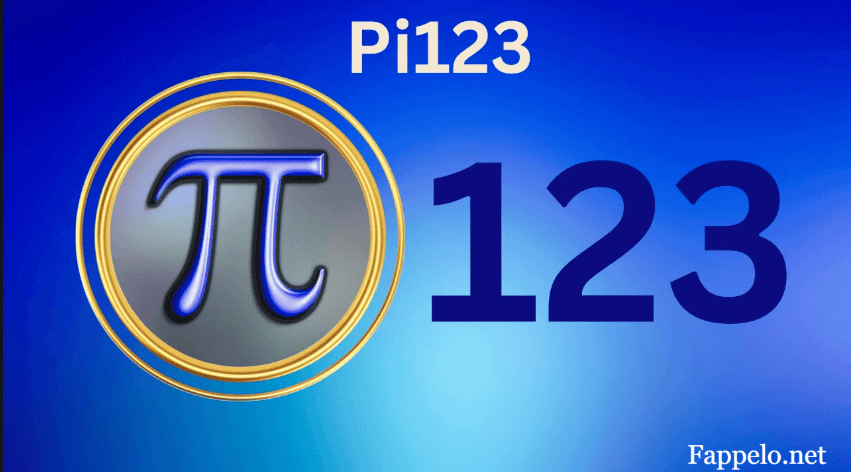Introduction
Pi (π) has fascinated mathematicians, scientists, and engineers for centuries. But now, a new term, Pi123, has emerged, bringing curiosity and interest among researchers. What exactly is Pi123, and how does it differ from the traditional concept of Pi? In this article, we explore Pi123, its importance, applications, and potential impact on science and technology.
Understanding Pi in Mathematics

The Significance of Pi (π)
Pi (π) is a mathematical constant that represents the ratio of a circle’s circumference to its diameter. No matter the size of the circle, this ratio always equals approximately 3.14159, continuing infinitely without repetition.
How Pi is Calculated
Pi can be calculated using various methods, including:
- Archimedes’ polygon method
- Leibniz formula
- Monte Carlo method
The Infinite Nature of Pi
Pi is an irrational number, meaning it has an infinite number of decimal places without a repeating pattern. It is widely used in trigonometry, physics, and engineering for precise calculations.
What Makes Pi123 Unique?
Pi123 is a term that extends the concept of Pi with enhanced computational methods. Unlike the traditional Pi, Pi123 is designed for high-precision calculations in advanced mathematical problems.
Difference Between Pi and Pi123
- Pi is a well-known mathematical constant used in fundamental calculations.
- Pi123 is a modern enhancement, focusing on high-accuracy computations in engineering and technology.
The Role of Pi123 in Mathematical Computations
Pi123 helps improve calculations by refining precision in areas such as fluid dynamics, structural analysis, and digital simulations.
Real-World Applications of Pi123
Engineering and Architecture
Engineers rely on Pi123 for designing structures that require precise measurements, such as:
- Bridges
- Skyscrapers
- Road networks
Space Exploration
NASA and other space agencies use Pi123 to calculate planetary orbits, spacecraft trajectories, and distance measurements between celestial bodies.
Computer Algorithms
Pi123 plays a crucial role in optimizing algorithms for data compression, image processing, and numerical simulations.
How Pi123 Enhances Calculations
Improving Precision in Scientific Research
Scientific experiments require a high level of accuracy. Pi123 ensures that calculations involving circles, waves, and quantum physics are more precise than ever before.
Benefits for Mathematicians and Physicists
For experts dealing with complex equations, Pi123 reduces the margin of error and enhances computational efficiency.
Pi123 in Cryptography
Securing Digital Communications
Pi123 contributes to encryption techniques by helping create more complex cybersecurity algorithms.
Role in Encryption Algorithms
Advanced cryptographic systems, such as RSA encryption, use variations of Pi123 to strengthen security protocols.
Pi123 in Machine Learning and AI
Enhancing AI Models
Pi123 is useful in pattern recognition, AI training models, and predictive analytics, enabling more accurate machine learning outputs.
Role in Neural Networks
Pi123 supports deep learning models that require extensive calculations, making AI applications more efficient.
Role of Pi123 in Astronomy
Calculating Planetary Movements
Astronomers use Pi123 to predict planetary motion with greater accuracy, improving our understanding of celestial mechanics.
Understanding Celestial Bodies
Pi123 helps determine the diameters, densities, and distances of stars and planets, aiding space research.
The Future of Pi123
Predictions and Potential Developments
With rapid advancements in technology, Pi123 may soon be integrated into:
- Quantum computing
- Advanced AI systems
- Interstellar navigation
How It Can Revolutionize Mathematics
Pi123 has the potential to reshape mathematical theory and applications, making computations faster and more precise.
Challenges in Using Pi123
Computational Limitations
Despite its accuracy, processing large-scale Pi123 computations requires significant computing power.
Accuracy Concerns
Mathematicians are still debating whether Pi123 can fully replace traditional Pi in every application.
How to Use Pi123 in Everyday Calculations
Simple Ways to Apply Pi123
- Using Pi123 in geometry problems
- Calculating circular object dimensions
- Enhancing scientific research methods
Tools and Software That Use Pi123
- Mathematica
- Python libraries for numerical analysis
- AI-based mathematical solvers
FAQ’s
1. What is the difference between Pi and Pi123?
Pi123 is an advanced version of Pi, designed for high-precision computations in mathematics and science.
2. How is Pi123 calculated?
Pi123 is derived using enhanced mathematical formulas and computer algorithms that improve accuracy.
3. Can Pi123 replace traditional Pi?
While Pi123 offers higher precision, traditional Pi is still widely used in many applications.
4. Is Pi123 used in modern technology?
Yes, Pi123 is applied in AI, cryptography, space exploration, and engineering.
5. Where can I learn more about Pi123?
You can explore mathematical research papers, online courses, and scientific publications on advanced Pi calculations.
Conclusion
Pi123 is an advanced version of the traditional Pi (π) used for more accurate calculations in science, technology, and engineering. It plays a key role in fields like space exploration, artificial intelligence, and cryptography, helping researchers and experts solve complex problems with greater precision.
While Pi has been used for centuries, Pi123 takes it a step further by improving accuracy in mathematical and scientific calculations. Though it is not yet widely known, it has the potential to revolutionize various industries in the future.
As technology advances, Pi123 may become even more important in shaping the way we understand and measure the world around us. Whether you are a student, scientist, or engineer, learning about Pi123 can help you appreciate the power of mathematics in everyday life.



